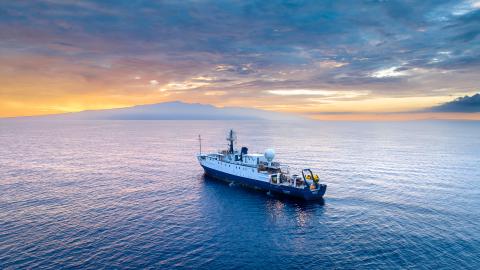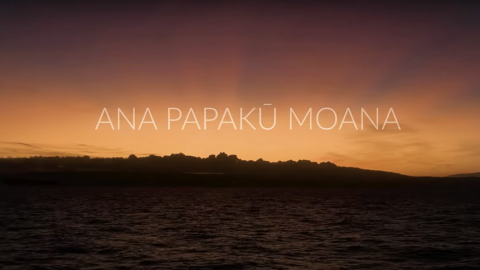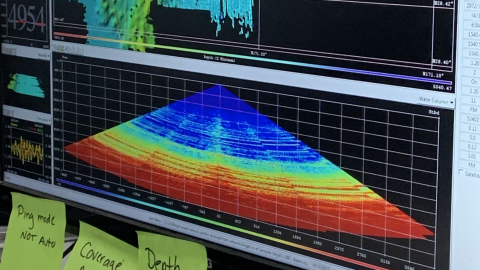Expedition Summary: Luʻuaeaahikiikapāpahākuʻiwawā
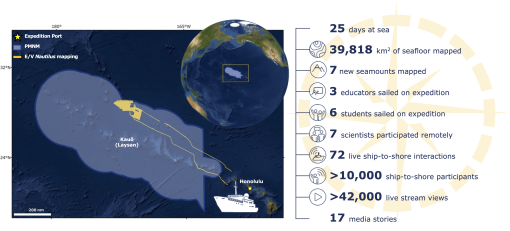
Download the Expedition Summary 1-pager [PDF]
At-A-Glance
Geographic Focus: US waters north of Kauō (Laysan), within the Papahānaumokuākea Marine National Monument (PMNM)
Main Operations: Seafloor mapping using ship-based sonars
Sponsor: NOAA Ocean Exploration via the Ocean Exploration Cooperative Institute
Expedition Overview
From August 19–September 13, 2022, the Ocean Exploration Trust and partners conducted a telepresence-enabled expedition aboard E/V Nautilus to map previously unmapped seafloor within the Papahānaumokuākea Marine National Monument (PMNM). The expedition used E/V Nautilus’ acoustic sonars to map areas within the expansion zone of the Monument located north of Kauō (Laysan Island). A total of 13 scientists, engineers, and students sailed on the expedition, who were supported by 7 professionals that participated remotely via telepresence technology. Throughout the mission, the team worked closely with NOAA, US Fish and Wildlife Service, and the Office of Hawaiian Affairs to co-develop culturally-relevant science, outreach and education products, particularly those targeting communities in Hawaiʻi and across the Pacific. This included working closely with Native Hawaiian and Hawaiian language practitioners to develop an expedition name reflecting Hawaiian relationships with mapping technology, as well as incorporating Hawaiian cultural values into expedition activities.
Mapping Highlights
Over 39,818 km2 of seafloor were mapped, including 37,035 km2 inside PMNM and the remainder during transits. Mapping focused on filling data gaps within the Monument expansion zone north of Koʻanakoʻa (Maro Reef), Kauō (Laysan Island), and Papaʻāpoho (Lisianski Island). Seven seamounts were mapped in their entirety for the first time. The high-resolution mapping data collected on this mission builds on previous mapping efforts inside the Monument by the E/V Nautilus and other programs. Collectively, over half of the seafloor inside the Monument has now been mapped at a high resolution.

Outreach and Public Engagement
Live video feeds received over 42,000 views over the course of the expedition. While at sea, the team created 6 new education products and lessons, as well as hosted 72 live interactions (in English and ʻŌlelo Hawaiʻi) with schools and community events, reaching over 10,000 people in 10 US States, Puerto Rico, and Poland. This included a special event reaching the European Space Foundation’s European Rover Challenge Festival. Three professional educators and six university students sailed on the expedition, gaining valuable at-sea experience. Early expedition results were featured in 17 media stories.
At-Sea Education
The expedition included the participation of four seafloor mapping interns. Throughout the 25 days at sea, interns obtained practical instruction on how to acquire and process seafloor mapping data collected by E/V Nautilusʻ sonars and auxiliary sensors. In addition to experiencing the life of at-sea exploration, interns were able to network with STEM professionals, and learn about the varied pathways leading to careers in ocean exploration.

Broader Impacts
Due to their natural and cultural significance, the Northwestern Hawaiian Islands and surrounding waters have undergone a long history of science, conservation, and resource management. Despite previous efforts, a large proportion of the Monument remains unmapped, hindering efforts to effectively manage its unique resources. The expedition closed knowledge gaps in support of the priorities of the Monument and its partner agencies. Expedition operations were conducted in previously unmapped areas, thus contributing directly to the National Strategy for Mapping, Exploring, and Characterizing the United States Exclusive Economic Zone (NOMEC), Seabed 2030, and the UN Decade of Ocean Science for Sustainable Development. Expedition activities also advanced NOAA mission priorities, particularly in terms of understanding ocean changes, sharing knowledge, and conserving marine ecosystems. Several students from underrepresented minority groups participated in the expedition, supporting priorities on education, diversity, and inclusion. Finally, the high-resolution mapping data collected on this mission is an essential precursor to future explorations of the region, which will undoubtedly lead to many discoveries.
Data Access
All data collected on the mission, including mapping, oceanographic and meteorological will be sent to publicly-available repositories for archiving, links to which are provided below. In the interim, expedition data is available upon request. Background information, highlight images, and educational materials are already publicly available via the expedition website.
|
DATA TYPES |
ARCHIVES |
|
Expedition documentation (daily reports, event logs, chat logs) |
|
|
Seafloor mapping (multibeam and sub-bottom) |
|
|
Ship navigation |
|
|
Ship-sensor environmental data (CTD, O2, air temperature, sea surface temperature) |
Acknowledgments
Thanks to the captain and crew of E/V Nautilus, the Nautilus Corps of Exploration, the Ocean Exploration Trust, and all that supported the expedition from shore. Expedition activities were conducted under Permit PMNM-2022-007 authorized by the State of Hawaiʻi, NOAA, and US Fish and Wildlife Service. The expedition was funded by NOAA Ocean Exploration via the Ocean Exploration Cooperative Institute.
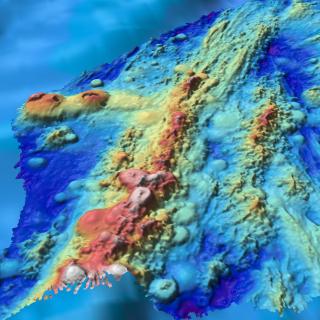
Luʻuaeaahikiikapāpahākuʻiwawā: Seafloor Mapping
This expedition focuses on high-resolution mapping areas of deep waters in the northern extent of Papahānaumokuākea Marine National Monument (PMNM) using ship-based mapping surveys.
